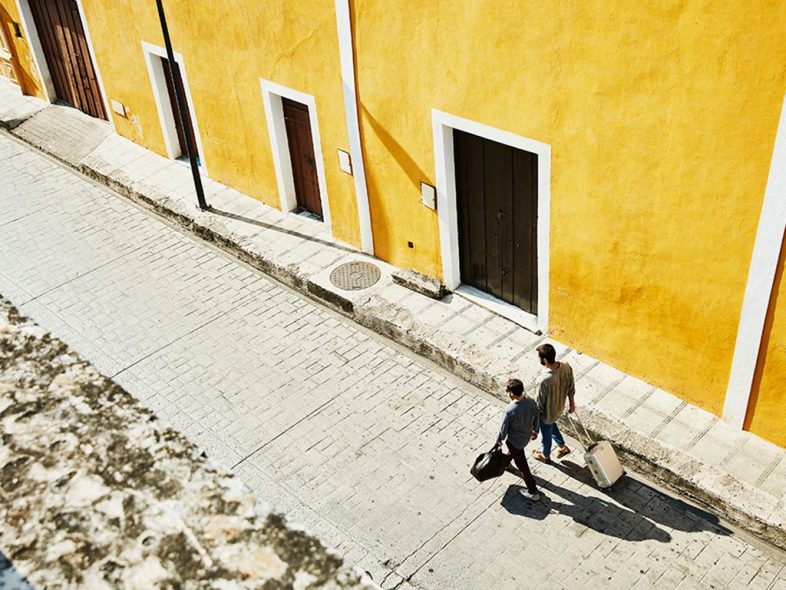More and more people are planning to travel as foreign countries gradually lift restrictions imposed due to COVID-19. And for many, the upcoming vacation is the first in a long time. While some countries are reopening their borders, some still have strict quarantine and testing rules in place, so be sure to check your destination country’s current regulations.
Apart from the ongoing pandemic, you still need to carry your passport, proof of vaccination (if required in the destination country), and some credit cards.
You should start thinking about how you’re going to pay for overseas purchases at least a few weeks in advance. This is because in some cases you may want to get a different type of card.
Here is a checklist of 10 things to do before you leave and upon arrival at your destination:
1. Plan your credit card
To travel abroad, you will need at least two Visa or Mastercard credit cards (American Express and Discover are less widely accepted worldwide). Having credit cards from different payment networks also helps, as with the massive Visa outage that affected cardholders in Europe on June 1, 2018.
You’ll also want to pack credit cards that don’t charge foreign transaction fees. These fees typically add 3 percent to the cost of purchases abroad—or at home when you buy items online from a merchant who is based overseas.
It’s also helpful if at least one of your credit cards has a PIN feature. Chip and PIN is the EMV chip card standard in Europe, and Chip and Signature is the US standard.
What it means: Some payment kiosks in Europe, for example for paying for train tickets or parking, only accept cards with a chip and a PIN. Few cards issued in the US have PIN capabilities – the most common being cards from Barclays, a British bank.
In terms of points and miles, you also need a credit card that gives reward points for travel purchases.
Finally, double check your credit limit and card expiration date. Your trip can be spoiled if you suddenly find that you cannot pay for various vacation expenses when you are already abroad.
2. Pack your debit card for the trip
You can use your debit card internationally to withdraw money from ATMs. You will need a debit card connected to your home bank account and make sure you have enough money in your account.
Check with your bank to see if they partner with the global ATM network. Interbank networks such as Visa PLUS and Mastercard, Maestro or Cirrus allow network ATM holders to access ATMs abroad without fees.
Otherwise, there will be some fees for ATM withdrawals, including an international ATM fee, which is a flat fee of up to $5 charged by your bank or credit union, plus possibly a percentage of the amount you withdraw. You may also be charged a car owner fee. This is the fee that the owner of the car charges you for using their ATM.
If you do not have a no-fee ATM network, you will need cash in local currency upon arrival.
3. Tell your banks about your travel plans
Some card issuers say it’s no longer necessary to tell your banks about your trips, but it doesn’t hurt to let your card issuers know where and when you’re going.
If you do not contact your card issuer, your unusual location may be flagged and your issuer may block further payments because the issuer may think that your credit card or account information has been stolen.
While it’s easy enough to call your card issuer if your card has been declined due to suspected fraud, there’s often a delay before you can use your credit card again.
4. Plan to take some cash
You should carry a mix of US dollars and foreign currency with you at all times as a last resort.
Plastic is not accepted everywhere. For example, street markets common in European cities can only accept cash. Taking a few hundred dollars in cash seems like the right thing to do.
The best place to exchange US dollars for local currency is your home bank. The rate is usually more favorable. Avoid currency exchange at airport kiosks because these rates are usually much higher.
5. Keep a copy of your card details with you
If your cards are lost or stolen while traveling, the phone numbers of your card issuers as well as your card information will come in handy. The 800 number you currently have probably won’t work outside of the US. Contact your issuer and get an 800 number that will work where you are traveling.
While you are talking with your card issuer, find out how the issuer will provide you with a new credit card if you lose or have your plastic stolen. Often, the issuer can deliver a new credit card to you by courier within a day or two, although there may be a fee.
Pack copies of your card information in a safe place, but separate from the cards (for example, not in your wallet). By the way, you can also take a photocopy of your passport in case your passport is lost or stolen. Having a copy will help expedite the process of issuing a new passport at your local embassy or consulate.
6. Consider getting a money belt
Consider where you most often carry cards and cash. Do you find it convenient to carry a purse or wallet in your back pocket in crowded tourist areas in big cities?
A credit card is safer than cash if you get robbed because you can at least call your credit card issuer to freeze it.
However, you should keep more important things like your passport and cash in your money belt in case your wallet or backpack gets stolen. A money belt is a small pouch with a strap that you wear around your waist and should be hidden under your clothes. If your other belongings are stolen, at least you will be left with important documents and some cash to help you get to your next destination.
7. Pay bills in advance, including credit card bills.
If you’re away for a week or two, don’t forget to pay your bills in advance. Failure to pay on the card will result in an immediate late payment charge at most card issuers.
Please note that trying to pay abroad can be difficult.
8. Choose to pay in local currency
Often, when using a credit card, you may be asked if you want to pay in dollars or in a foreign currency. You should choose a foreign currency because your card issuer at home usually gives you a better exchange rate for overseas transactions than the merchant.
9. Don’t use a credit card for cash
As in the US, you should not attempt to use your credit card at an ATM. This will be charged as a cash advance, with a high interest rate.
Other reasons why you should always avoid cash withdrawals: You will usually have to pay a transaction fee, which is a percentage of the cash withdrawal. And there is usually no grace period for cash advances.
10. Don’t use a debit card for purchases
Nearly all debit cards you use abroad for purchases will be charged a foreign transaction fee. (One major exception: Capital One debit cards.) Instead, use a credit card with no foreign transaction fees.
bottom line
Now that the journey is heating up again, it’s important to prepare for it. With a little planning and knowledge, you can be sure that your vacation will be for fun and not for financial logistics. Once you’ve sorted out the details, all you need to do is enjoy.
Editorial disclaimer
The editorial content on this page is based solely on the objective judgment of our contributors and is not based on advertising. It was not provided or ordered by credit card issuers. However, we may receive compensation when you click on links to our partners’ products.


